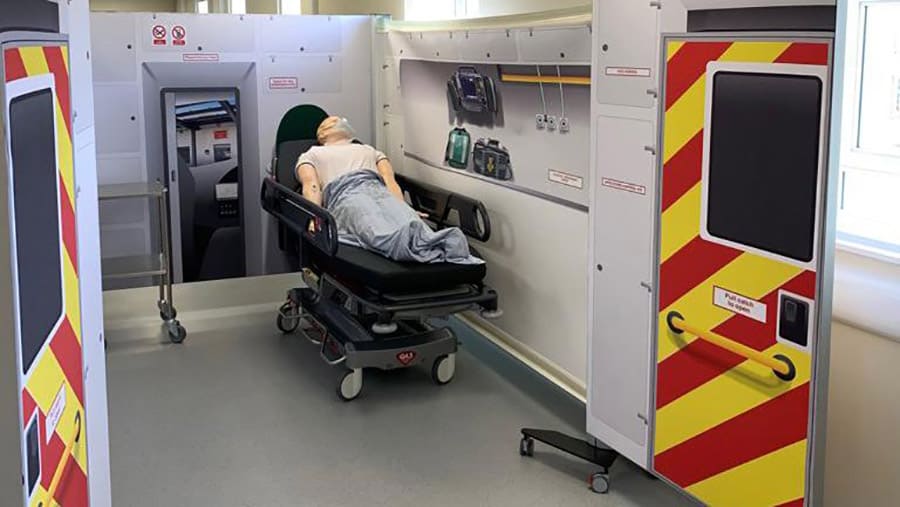Remote ultrasound tech to help ease pressure off emergency departments and improve patients’ experiences

A collaboration between University Hospitals Birmingham NHS Foundation Trust (UHB), BT and WM5G has demonstrated how a remote-controlled ultrasound scan over a public 5G network could help reduce the number of ambulance journeys.
Showcased in UHB’s simulation lab, the partnership revealed how high-speed 5G technology could transform the healthcare sector by allowing remote diagnostics to be performed by paramedics who are supported by clinicians based in the hospital. It means that activities that could only be performed in one location before can now become mobile through a quicker and more reliable internet connection, enabling care delivery to be streamlined.
The demonstration simulated a paramedic performing an ultrasound scan on a patient, under the remote guidance of a clinician who was able to interpret the ultrasound image in real-time. The ultrasound sensor was manipulated locally by the paramedic under the remote direction of the clinician. This was carried out using a joystick operated remotely by the clinician which sent control signals over the 5G network to a robotic glove worn by the paramedic.
The glove created small vibrations that directed the paramedic’s hand to where the clinician wanted the ultrasound sensor to be moved. This allowed the clinician to remotely control the sensor position, whilst seeing the ultrasound images in real-time.
In addition, there was camera in the ambulance which transmitted, in high definition, a view of the inside of the ambulance covering the patient and paramedic to a second screen located on the clinician’s workstation.
The images were relayed over a high-bandwidth 5G connection, so the clinician was able to view both the ultrasound examination performed by the paramedic and keep an eye on the overall scene inside the ambulance. The fast 5G speeds enable sharper and more reliable imagery for the clinician than could ever previously be achieved.
Enabling ultrasound scans to be performed by paramedics and reviewed remotely by an expert clinician can benefit both the patients and the NHS, notes UHB.
Alongside speeding up diagnoses for patients, the remote scans have the potential to reduce the number of ambulance journeys and emergency department visits, improving the overall experience for patients while simultaneously freeing up ambulance resources and reducing pressure on emergency departments.
Faster diagnoses can also assist in triaging patients, ensuring more effective outcomes for the patient, and increasing overall efficiency for the hospital.
Tim Jones, Chief Innovation Officer at UHB, said: “We are immensely excited about the potential of 5G to support transformation in healthcare. As a Global Digital Exemplar, we are always looking into new technologies and how we can use them to improve patient care. 5G will help us to roll out this next generation of healthcare technologies.
“Our clinicians will in the future be able to deliver holistic specialist advice in real time, potentially forming virtual multi-disciplinary teams to provide the best patient care using intelligent IT links.
“Information would be accessible at the point of need, ensuring informed decision making leading to improved patient safety, quality of care and patient/clinician experience.”
Gerry McQuade, CEO of BT’s Enterprise unit, added: “We’re really excited to be working with WM5G and University Hospitals Birmingham on the first 5G healthcare trial to take place in the UK over a live public network.
“BT has a long and proud heritage of working with the NHS to better connect patients and healthcare professionals and the characteristics of 5G will deliver a huge-step change in speed, capacity and reliability.
“We are focused on delivering new, innovative services which will make lives better and firmly believe in using the power of 5G to bring potentially life-saving benefits to patients.”

